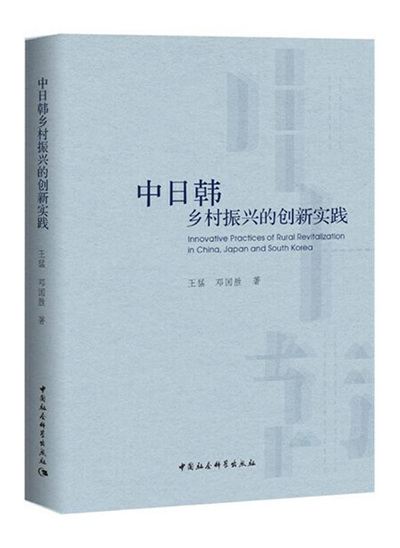Rural vitalization cases in East Asia

Innovative Practices of Rural Revitalization in China, Japan and South Korea
Innovative Practices of Rural Revitalization in China, Japan and South Korea, takes a comparative perspective to analyze typical cases of rural vitalization in the three countries.
Coauthored by Wang Meng, an associate professor from the College of Politics and Public Administration at Qingdao University, and Deng Guosheng, a professor and deputy dean of the School of Public Policy and Management at Tsinghua University, it aims to refine the laws of rural vitalization, providing experience and reference for the practice of rural vitalization across various parts of China.
A case study of rural vitalization in Shaoguan, Guangdong Province, introduces the social experiment carried out in Renhua County and Nanxiong by the Shaoguan Rural Revitalization Foundation, and analyzes the resource advantages and strategic steps taken by the foundation in the process of rural vitalization. The foundation has steadily promoted local rural vitalization work and made phased progress, from the two dimensions of “unified planning and unified construction” and “participatory planning.”
A case study of Jinggangshan, Jiangxi Province, introduces the roles and practices of different subjects including the government, market, and society in the process of rural vitalization, and analyzes the multiple modes of rural vitalization in Jinggangshan.
Another case study of Yunxiao County, Fujian Province, introduces how social organizations in the area used the renovation of local Tulou [round earth buildings] as an entry point, and launched such activities as cleaning up the living environment, widening roads, preparing for and organizing an academy, and conducting nature education. These activities help arouse indigenous consciousness and exert the role of villagers’ subjectivity, stimulating the endogenous power of rural vitalization.
In the 1970s, Japan encountered a severe shortage of rural talent, capital outflow, and industrial shrinkage. In order to vitalize rural areas and the regional economy, the “One Village, One Product” campaign was launched. In recent years, Japan has put forward the concept of “regional empowerment.” It is expected that towns and villages independently develop the “sixth industrialization” in accordance with local conditions, encouraging the backflow of the population and easing the lack of vitality and industrial decline caused by population aging and decline.
South Korea shares similar cultural backgrounds with China. In the 1970s, the New Village Movement began to sweep the country. By the 1980s, the movement gradually finished the transition from administrative leadership to self-management by the market and society.
Japan and South Korea belong to the same Confucian cultural circle as China, and they also have similar cultural traditions and similar backgrounds and problems concerning rural construction as China. Their experience also offers valuable reference for China’s rural construction.
Li Hairong is from the College of Politics and Public Administration at Qingdao University.
Edited by YANG LANLAN
